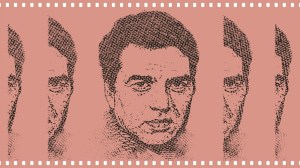
None are masterpieces, and Lee herself likely never meant them to be seen. Yet they glimmer with the instincts that would define her singular novel: the tension between innocence and experience, the comedy of small-town piety, and the uneasy knowledge that childhood idylls are never as pure as they seem.
Between Maycomb and Manhattan
It begins in Maycomb, of course. Or something like it — a sleepy Alabama town caught between affection and suffocation, its gossip and hymns ringing faintly across decades. The first story in The Land of Sweet Forever could almost be mistaken for a prelude to To Kill a Mockingbird with the same slow afternoons, the same moral unease under a varnish of good manners. But the difference is palpable. This is not the confident voice of an author writing from mastery. It is the sound of a writer learning what she might one day dare to say.
In these pages, Lee oscillates between the world she fled and the one she never quite joined. Maycomb (sometimes unnamed) remains the gravitational center. “The Cat’s Meow” and the title story are populated by churchgoing busybodies, weary fathers, sharp-tongued sisters, the kind of people Lee knew all too well. Their small cruelties accumulate into quiet tragedy. “The Land of Sweet Forever” opens with a parody of Jane Austen — “It is a truth generally acknowledged by the citizens of Maycomb, Alabama…” — but what follows is pure Lee.
Her New York stories, by contrast, are sketches of displacement. “This Is Show Business?” finds a Southern girl bewildered by the chaos of Manhattan traffic, reduced to self-mockery as she navigates “one of those push-button cars where if you know what to do, everything is done for you.” It’s the same voice that would later marvel, in Mockingbird, at the strangeness of adult behavior — part innocence, part irony.
Gothic whispers and moral glints
What saves these stories from mere juvenilia is their edge of darkness. In “A Roomful of Kibble,” a neighbor literally burns to death after a petty feud. The scene is both horrific and comic — a grotesque exaggeration of small-town vengeance that anticipates the moral chiaroscuro of Go Set a Watchman. Lee’s humor is unsparing, her gaze unblinking. Even the most innocent narrator seems to understand that cruelty thrives best in polite company.
Story continues below this ad
There are moments, too, of unmistakable lyricism. In “The Pinking Shears,” a child’s bewilderment at adult hypocrisy is rendered with aching simplicity: “They said one thing and did another, and it made me want to be silent for a year.” In that line, we hear the genesis of Scout Finch — and of the silence that defined Harper Lee’s later life.
The nonfiction pieces, written after Mockingbird, form a second half that feels like a postscript to the fiction. Some are slight — a recipe, a note on her friend Truman Capote — but others shimmer with self-awareness. In “Christmas to Me,” Lee recounts the extraordinary gift from her friends Michael and Joy Brown: a year’s living expenses so she could write.
 The rediscovery of her manuscripts — first Go Set a Watchman in 2015, now these sketches, risks feeling like a second-hand resurrection.
The rediscovery of her manuscripts — first Go Set a Watchman in 2015, now these sketches, risks feeling like a second-hand resurrection.
What the book isn’t — and what it is
Readers looking for lost treasure will be disappointed. These stories are drafts, merely “the scaffolding of a masterpiece.” The prose sometimes falters and the pacing sags. Yet within their modest frames are the embryonic shapes of everything that made Lee matter: the moral irony, the empathy laced with fury, the tenderness toward the powerless.
That said, there is an ethical unease hovering over the book. Lee was famously private, famously reluctant. After Mockingbird, she published nothing for 55 years. The rediscovery of her manuscripts — first Go Set a Watchman in 2015, now these sketches, risks feeling like a second-hand resurrection, more commercial than cultural. Still, Cep’s curatorial restraint, and the clear editorial notes separating drafts from later fragments, lend the project a measure of integrity.
Story continues below this ad
The grace of imperfection
The greatest gift of The Land of Sweet Forever is not new literature but renewed context. It reminds us that even a voice as iconic as Lee’s began in uncertainty. She tried on sentimental, sardonic and moralising tones before finding the plainspoken rhythm that would make her famous. To watch that process unfold, even imperfectly, is to see the mystery of creation in reverse.
These are apprentice stories, yes, but written with the moral intelligence of a young woman who already knew too much. They do not enlarge Harper Lee’s legend so much as humanise it. And in own quiet way, they remind us that greatness often begins with the smallest acts of observation: a child watching, an adult remembering, a woman finally daring to write it down.



 The rediscovery of her manuscripts — first Go Set a Watchman in 2015, now these sketches, risks feeling like a second-hand resurrection.
The rediscovery of her manuscripts — first Go Set a Watchman in 2015, now these sketches, risks feeling like a second-hand resurrection.





























